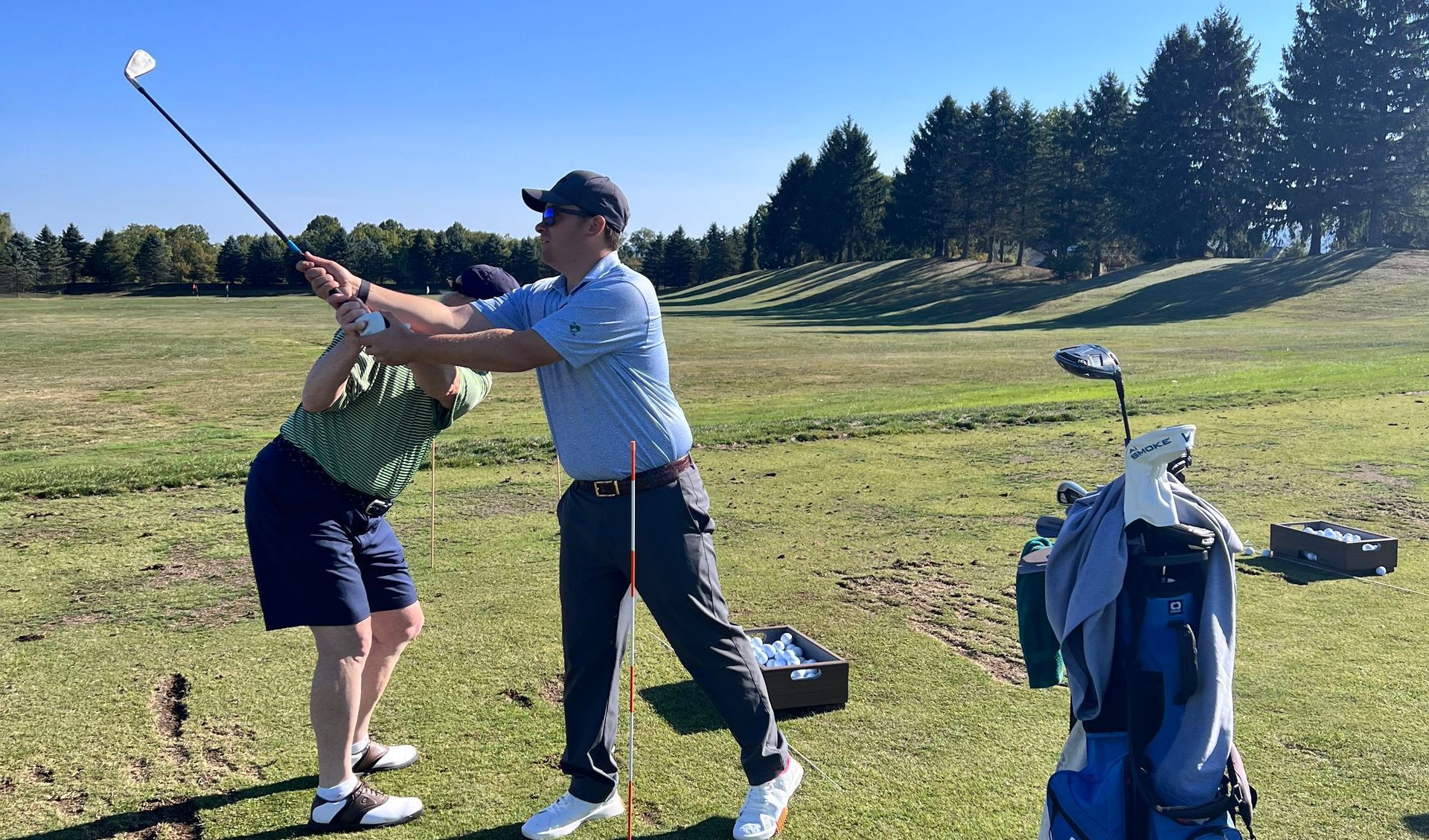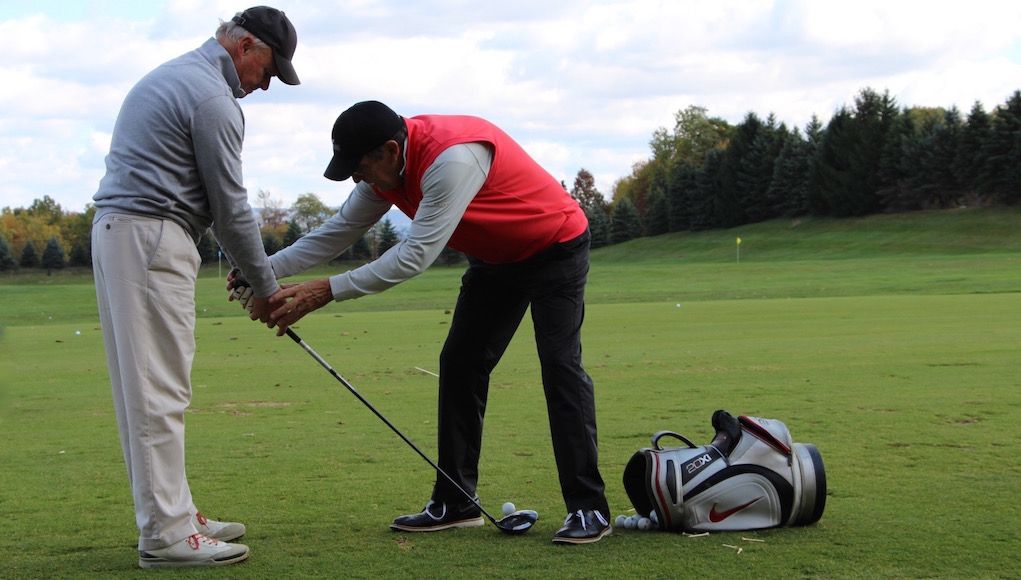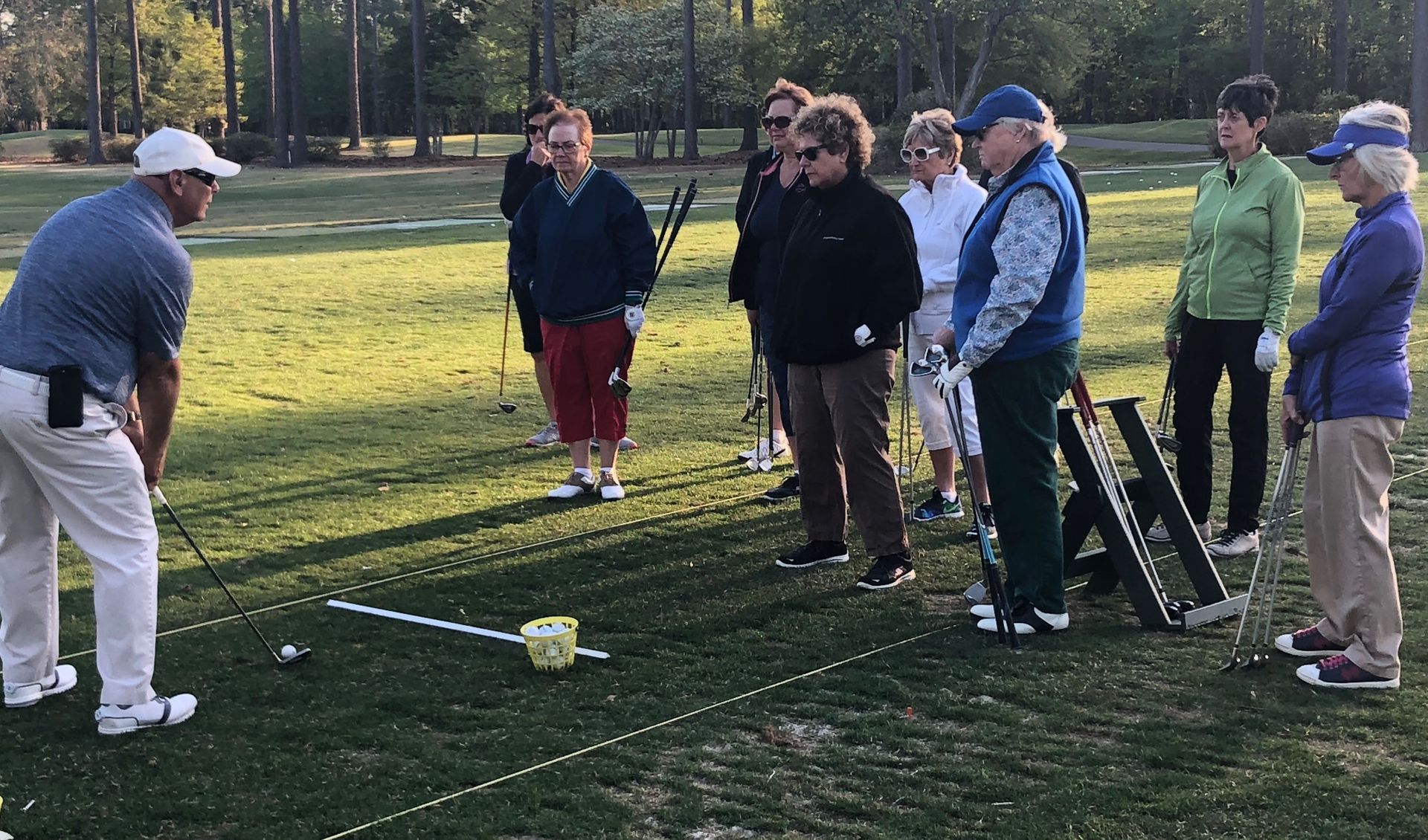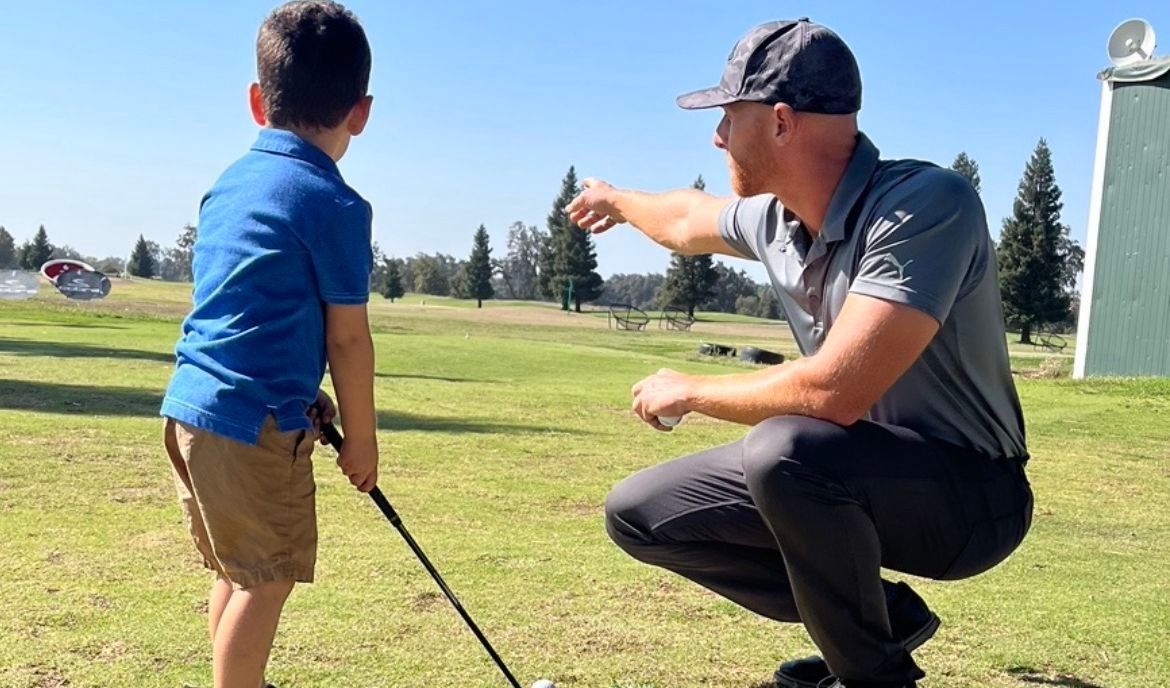May 22, 2025
How Great Golf Instructors Drive Member Retention

Unpacking the Business Impact of Elite Instruction on Loyalty, Revenue, and Long-Term Club Success

The Hidden Power of Golf Instruction
In the competitive world of golf clubs and courses, member retention is more than a metric—it's the heartbeat of sustainability. While amenities, food and beverage services, and course conditions often receive the lion's share of attention, one crucial factor quietly influences member loyalty and long-term engagement: great golf instruction. The impact of skilled instructors on the member experience is far more significant than many club owners or investors may realize. Behind every long-standing member is often a trusted coach, mentor, or instructor who has helped them find joy, progress, and community through the game.
Golf is a deeply personal sport, and improvement is rarely linear. Members who feel seen, supported, and celebrated in their golf journey are more likely to stay emotionally and financially invested in their club. Great instructors serve not just as teachers but as ambassadors of the club's culture, brand, and value proposition. They become one of the most consistent touchpoints a member has, often influencing not just performance on the course but the entire perception of what membership means.
From junior golfers to seasoned seniors, instruction plays a role in creating meaningful connections. This article explores how great golf instructors drive member retention and ultimately elevate a club's financial health, cultural vitality, and long-term market position.
The Emotional Connection Between Coach and Member
At the heart of great instruction lies an emotional connection. A golf instructor who understands a member's personal goals, frustrations, and aspirations can tailor lessons to resonate far beyond mechanics. This emotional engagement is a powerful retention tool. Members who feel known and supported are less likely to leave, even when life changes or financial pressures arise. The instructor becomes a reason to stay, a consistent presence in an otherwise transient recreational landscape.
Golf is inherently challenging, often humbling. The relationship between student and teacher builds resilience, shared victories, and trust. For newer members especially, having an instructor who checks in, celebrates small wins, and helps navigate setbacks can anchor them in the club's ecosystem. It turns an individual sport into a shared experience. Clubs that foster these relationships are creating bonds that go far beyond the tee box.
This emotional engagement also deepens with time. A member who has worked with the same instructor over years begins to associate personal growth with club membership. That continuity becomes part of the club's perceived value. For club owners and managers, supporting and retaining top instructors means preserving the emotional fabric that ties members to the property.
Instruction as a Strategic Membership Onboarding Tool
First impressions matter. For new members, an introductory lesson with a warm, knowledgeable instructor can make all the difference in how they perceive the club. Instruction is often the first structured activity a new member engages in. It sets the tone for the experience and introduces them to the rhythm of the club community. If that initial interaction is personalized, effective, and encouraging, it creates a positive emotional anchor.
Great instructors have the ability to act as informal onboarding ambassadors. They are often the first people to engage new members in a meaningful way. A thoughtful swing assessment or customized development plan signals that the club is invested in their success. This builds early trust and begins the retention journey from day one. It's a kind of soft welcome that no brochure or orientation packet can match.
Moreover, onboarding through instruction helps members find their place within the club's culture. They meet staff, are introduced to group clinics or leagues, and begin to see themselves as part of a community. Instruction, then, becomes not just about playing better golf, but about belonging—and that sense of belonging is one of the strongest drivers of long-term membership.

Creating Tangible Progress and Measurable Milestones
Progress is addictive, and one of the most satisfying aspects of golf is measurable improvement. Great instructors know how to track and celebrate small gains, whether it's a smoother swing path, improved putting consistency, or lower scores. These tangible milestones keep members engaged, focused, and motivated to return. When members see improvement, they validate their decision to remain part of the club.
The ability to document progress adds a professional layer to instruction. Through video analysis, swing data, and goal tracking, instructors can provide members with visual and statistical evidence of improvement. This not only reinforces the value of instruction but enhances the perceived value of club membership as a whole. Clubs that support their instructors with the tools to measure progress are better positioned to retain members over the long term.
Furthermore, these milestones are emotionally reinforcing. Members develop pride in their achievements and often share them with others. This personal pride translates into club pride, increasing the likelihood that members will speak positively about the club to friends, family, and potential prospects. It becomes a self-reinforcing cycle: instruction leads to progress, progress deepens loyalty, and loyalty generates word-of-mouth marketing.
The Role of Group Clinics and Community Engagement
While private instruction is invaluable, group clinics offer a different and equally powerful avenue for retention. They create social bonds between members, provide a low-pressure learning environment, and build community. Instructors who run engaging, inclusive clinics help transform the club from a facility into a social hub. These events introduce members to new friends and foster a sense of camaraderie that extends well beyond the range.
Group instruction also allows clubs to serve more members efficiently. For those who may not be ready or able to commit to private lessons, group clinics offer an accessible entry point. When these sessions are led by charismatic, skilled instructors, they still deliver real value while building relationships. Over time, these clinics become part of a member's routine, contributing to club habit formation and loyalty.
Instructors who facilitate social interaction while teaching are delivering more than just technical advice. They are creating an environment where people feel safe, encouraged, and connected. This emotional resonance is a key reason members continue paying dues. It's not just about the golf—it's about the friendships, laughter, and memories created through shared instruction.
Instructor-Led Programming as a Competitive Differentiator
In today's crowded golf landscape, clubs need unique value propositions to attract and retain members. Instructor-led programming—including player development programs, on-course instruction, skill-specific clinics, and junior academies—offers a powerful differentiator. Clubs that invest in full-time, high-quality instructors with a knack for program design are positioning themselves ahead of the curve.
Top instructors bring more than just swing knowledge. They understand how to build programs that span seasons, age groups, and skill levels. They provide a framework for continuous engagement. When members know there is always another clinic, another tournament prep session, or another chance to work on their short game, they are more likely to stay connected to the club.
This programming also enhances the club's brand identity. A club known for its excellent instruction becomes attractive to families, juniors, and competitive players. It becomes more than a place to play—it becomes a place to grow. And growth, in both skill and community, is what keeps members renewing year after year.

Financial ROI of Instructor Investment
Some club owners view instruction as an auxiliary service—something nice to have but not essential. This mindset overlooks the financial return that great instruction can generate. Instructors are not just cost centers; they are retention engines. Members who take lessons are more likely to renew, more likely to spend in the pro shop, and more likely to engage in other revenue-generating activities.
An instructor who keeps ten members from quitting pays for themselves many times over. The cost of replacing a member—through marketing, onboarding, and lost revenue—far exceeds the cost of supporting a skilled teaching staff. When instruction is positioned as central to the member experience, it becomes a revenue safeguard. It reduces churn, increases engagement, and supports upselling into clinics, club fittings, and equipment sales.
Additionally, instructors often create new revenue channels directly. From video lesson packages to junior camps and corporate clinics, their services can be monetized in creative ways. Smart club operators view instructors as partners in growth, not line items to be minimized. They understand that the financial health of the club is inextricably linked to the instructional team's strength and vision.
The Importance of Instructor Longevity and Club Alignment
Instructor turnover can be destabilizing. Members build trust and rapport with their instructors, and losing that relationship can lead to disengagement. Clubs that prioritize instructor retention are safeguarding member retention at the same time. This requires fair compensation, growth opportunities, and a shared vision between instructors and management.
Longevity also allows instructors to develop deep institutional knowledge. They understand the unique culture of the club, the quirks of the course, and the personalities of long-term members. This knowledge allows for a more personalized and effective instructional experience, which in turn enhances member satisfaction. Stability within the instructional team reflects stability within the club—a valuable perception for both members and potential investors.
Alignment is just as important as longevity. Instructors should be included in strategic conversations about programming, member engagement, and club branding. When instructors feel valued and heard, they are more likely to contribute creatively and consistently. Their buy-in can be a powerful lever for innovation and cultural cohesion.

Instruction and the Next Generation of Golfers
Junior golf programs are among the most potent long-term retention strategies a club can invest in. Not only do they engage young players, but they also involve parents, grandparents, and entire families in the life of the club. Instructors who excel with juniors are building future members, plain and simple. They teach not only technique but also sportsmanship, patience, and a love for the game that can last a lifetime.
The presence of dynamic junior programs elevates the club's image and extends its reach. Prospective members with children often seek out clubs that offer comprehensive youth instruction. These programs become selling points and differentiators. Furthermore, juniors who grow up in the club culture are more likely to remain loyal members into adulthood. They form friendships, memories, and skills that keep them coming back.
Instructors who focus on junior development need specialized skills. Patience, creativity, and the ability to communicate across age groups are essential. Clubs that support these instructors with resources and recognition are investing not just in programming, but in the very future of the club's membership base.
From the Lesson Tee to Lifelong Loyalty
Instructors are not just teachers; they are retention specialists, culture builders, and financial assets. Their impact stretches far beyond the driving range. When supported, empowered, and integrated into the strategic vision of a club, great golf instructors help turn casual players into lifelong members. They create emotional bonds, inspire progress, and foster community.
For club owners, managers, and investors, the message is clear: instruction is not optional. It is central to member satisfaction, club differentiation, and long-term viability. The path to higher retention, stronger culture, and sustainable profitability often begins with a single swing—guided by a great instructor, and backed by a club that understands their value.
More from Fairway Control












